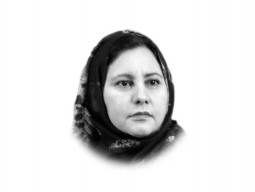
Then and after the collapse of the Soviet Union in 1991, America had emerged as the preeminent power. It had the world’s largest economy. It was the strongest military in the world. And, it had evolved a political system that was admired around the globe. It was prepared to guide the world in an order in which countries followed accepted principles and wrote rules based on them. Trump and most of his associates seemed eager to go alone.
Those in opposition to him interpreted his winning slogan of ‘Make America Great Again’ to really mean ‘Make America White and Christian Again’. This represented a fundamental change on what the Americans had always regarded as their mission in the world. This change of the American heart will have consequences for all parts of the world. How would the Trump America work for South Asia?
To answer that question we need to go through the way the South Asian region has evolved since it gained independence. The area’s two largest countries — India and Pakistan — became independent almost 70 years ago. The third largest, Bangladesh, went through its third partition when it separated from Pakistan to become an independent state. The previous two partitions for what is now Bangladesh were in 1905 and 1947. The first took place when the British administration responded to the pressure of the Bengali Muslims and partitioned Bengal into two provinces. One in the East, with its capital in Dhaka had a Muslim majority. The second in the West had a predominantly Hindu population with Calcutta (Kolkata) continuing to be its capital. The Indian National Congress agitated against the move by the colonial administration and the British annulled the partition and reunited Bengal. The second partition was in 1947 when East Bengal became a part of Pakistan, a union that was uneasy and lasted for less than a quarter century.
Bangladesh, in other words, has a 112-year history of attempting to find the basis of nationhood. It has oscillated between using religion and ethnicity to define Muslim Bengal’s identity as a nation. After 1971, it has settled on ethnicity and a common language as the criteria for keeping together its citizens within the boundaries of one country. Bangladesh is South Asia’s most ethnically and linguistically homogenous state. That it is also a predominantly Muslim country is now regarded as incidental, not a defining feature. That is no longer the case in India and Pakistan.
While Pakistan in the 1970s and 1980s decisively moved towards Islam for defining its identity, India until now was able to keep religion largely out of politics. Since the rise of Narendra Modi and the Bharatiya Janata Party that he leads, Hinduism is seen by many as the defining element of their identity. That the leadership of Uttar Pradesh has been turned over to a committed Hindu nationalist as the state’s chief minister could signal the beginning of a drift towards the religious right. That that is happening in the country’s largest and religiously most diverse state, goes against what the historian Sunil Khilnani had called the idea of India — the idea that economic, political and social systems could be devised to satisfy the different aspirations of very diverse people. Religious identity, ethnicity — even language — would not be the basis of nationhood. But India has deviated from that idea. It has created a number of states on the basis of language. Sometimes languages overlap with religious identity.
Pakistan has had an even more chequered history. Muhammad Ali Jinnah, the country’s founding father, initially wanted to secure the rights for his Muslim community that was in minority. He wanted a political status for his people to that that was equal to the majority Hindu population. But that was clearly not acceptable to the Hindu leadership. Politics and demography came into conflict. At the time the British left the subcontinent, India had a population of 400 million people of which one-fourth, or 100 million, were Muslims. Those who came to Pakistan were divided in the country’s two wings, 40 million in East Pakistan and 32 million in West Pakistan.
In a study done for the Singapore’s Institute of South Asian Studies to commemorate Pakistan’s 70th birth anniversary, I asked the question whether South Asia’s Muslim community that has increased five-fold, from 100 million to 500 million over the last 70 years, would have been better off had the British not partitioned their colony. My conclusion is that the Muslims of Pakistan and Bangladesh have done better than their forefathers compared to those who remained behind. Even after 70 years, South Asia has not yet settled down in ways that it could act as a region as do, say, the Europeans, the East Asians, the Latin Americans. The challenge posed by the rise of Donald Trump in the United States will only get handled if the people of South Asia develop a common regional approach.
Published in The Express Tribune, August 7th, 2017.
Like Opinion & Editorial on Facebook, follow @ETOpEd on Twitter to receive all updates on all our daily pieces.













COMMENTS
Comments are moderated and generally will be posted if they are on-topic and not abusive.
For more information, please see our Comments FAQ